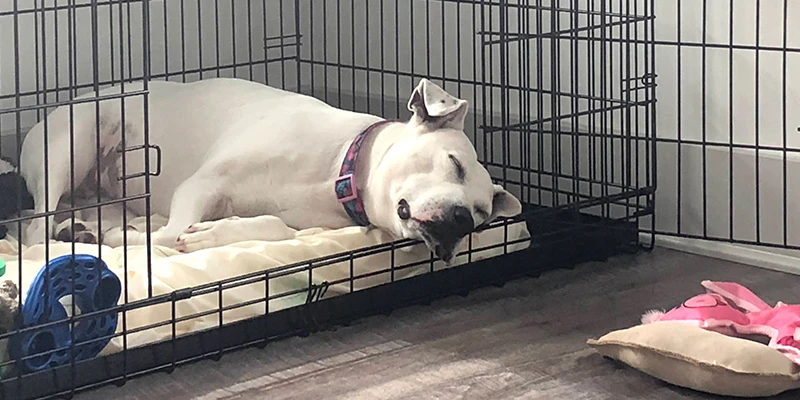Crate Training Your Dog: How & Why Its Important

Crate training, rooted in a dog's natural instincts, is a powerful tool for pet owners. It taps into a canine's desire for a safe and quiet space, especially when the world gets overwhelming. However, like any tool, it's crucial to use it right. This guide, drawing from years of expertise and real-world experience, will lead you through the intricacies of crate training—highlighting the benefits, the correct approach, and potential pitfalls.
Why Crate Training?
- Natural Instinct: Dogs are den animals. In the wild, canines seek out small, enclosed spaces for security. Crates can mimic this environment, offering them a sanctuary in a domestic setting.
- House Training: Crates play a vital role in potty training. They encourage puppies to hold their bladder and bowels, as they naturally avoid soiling their resting space.
- Safety and Security: Whether you're away from home or have guests, a crate ensures your dog stays safe and prevents unwanted behaviors like chewing or aggression.
- Health and Well-being: For dogs recovering from surgery or suffering from specific health issues, a crate provides a controlled environment, facilitating better recovery.
- Travel: Whether it's a visit to the vet or a longer journey, crates make traveling with your pet more manageable and less stressful.
Getting Started: The Right Approach
- Choose the Right Crate: Not all crates are the same. From plastic "flight kennels" to fabric frames and collapsible metal pens, select one that fits your dog's size and needs. Ensure it's spacious enough for them to stand and turn comfortably.
- Make It Welcoming: Introduce your dog to the crate gently. Use treats, toys, and positive reinforcement to build a positive association. Remember, it should be their safe haven, not a punishment.
- Training: Familiarize your dog with the crate without forcing them. Start by feeding them inside it and gradually increase the duration they spend inside. Make sure departures and arrivals are low-key to reduce anxiety.
Training Steps: From Introduction to Mastery
- Initial Familiarization:
- Begin by placing the crate in a common area with the door open.
- Use treats or their favorite toy to lure them near it, allowing them to explore at their own pace. Avoid forcing them inside.
- Praise and reward any positive interaction with the crate.
- Mealtime in the Crate:
- Start feeding your dog their regular meals inside the crate. This creates a pleasant association.
- If they're hesitant, place the food just inside the entrance, gradually moving it deeper with each meal.
- Increasing Crate Time:
- Once they're comfortable eating inside, start closing the door briefly, then reopening it before they finish.
- Gradually extend the time the door stays closed after they're done eating, aiming for a few minutes at a time.
- Always stay nearby, offering verbal reassurance if they show signs of distress.
- Extended Crating:
- Encourage them to enter the crate using a command like "crate up" or "bedtime", rewarding them once inside.
- Start by crating them for short periods while you're at home.
- Increase the duration over several days, ensuring they're comfortable.
- Crating When You Leave:
- Begin crating your dog just before you leave the house.
- Keep departures and arrivals low-key to avoid creating anxiety.
- Initially, try short absences and gradually extend the time.
- Overnight Crating:
- If possible, keep the crate in your bedroom for the first few nights.
- This reassures them they're not alone, easing the transition to longer crating durations.
Challenges and Solutions
- Whining: Dogs might whine in the crate due to the need to eliminate or for attention. It's vital to discern the reason. If it's soon after a potty break, it's more likely for attention. Avoid reinforcing the behavior by letting them out when they whine. Instead, wait for a quiet moment.
- Separation Anxiety: Crate training can be a tool to combat mild separation anxiety. However, if your dog shows severe signs, crating might not be the solution. It's best to consult with a professional.
- Over-reliance: Remember, the crate is a tool, not a permanent solution. Dogs shouldn't spend the majority of their day inside it. Overconfinement can lead to depression and other behavioral issues.
Crate training, when executed with care and knowledge, can be an invaluable asset in a dog owner's toolkit. It offers safety, security, and peace of mind, benefiting both the pet and the owner. However, always prioritize your dog's well-being, ensuring they're comfortable and happy. After all, a well-adjusted dog is a joy to have around.